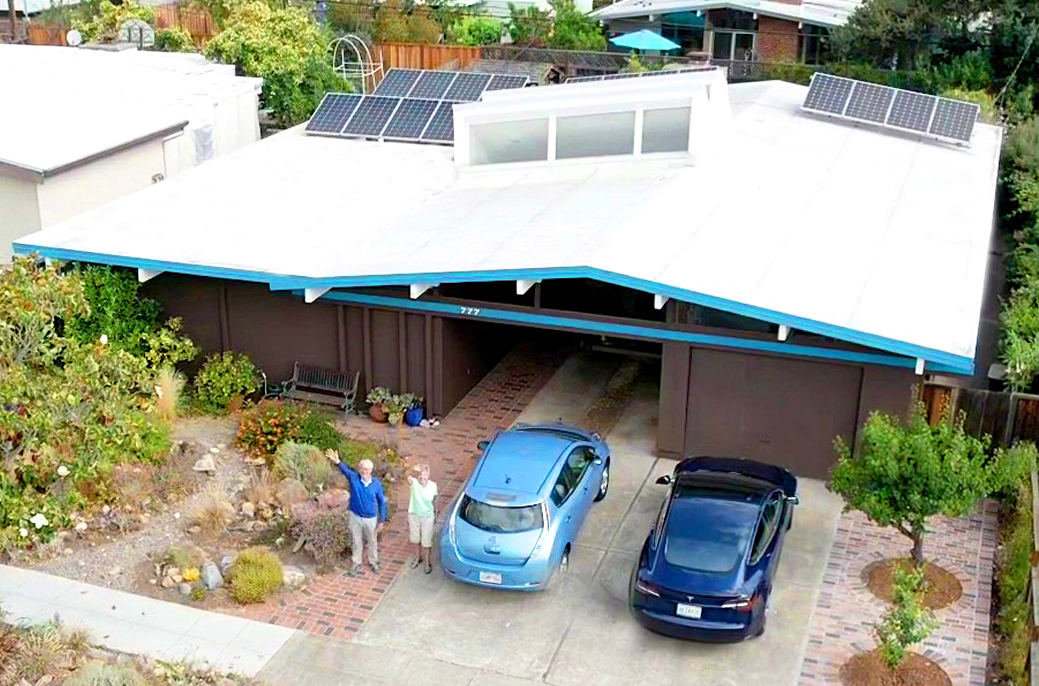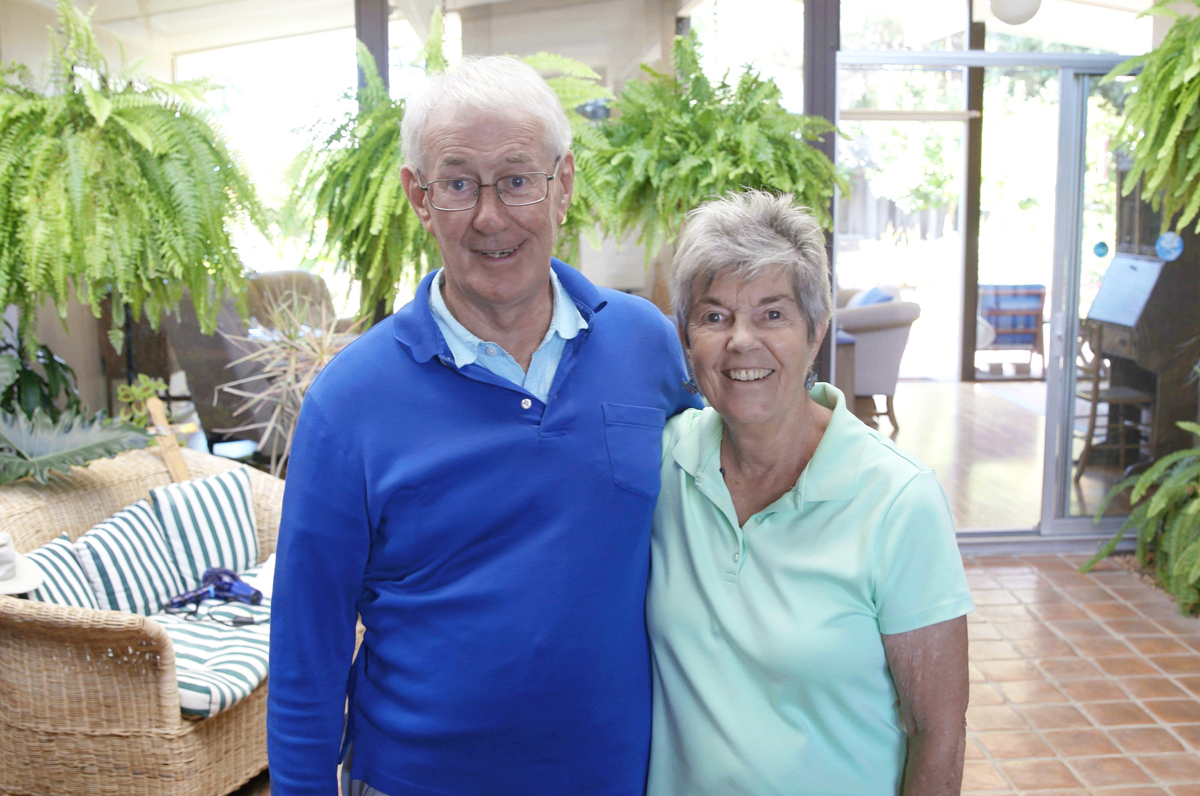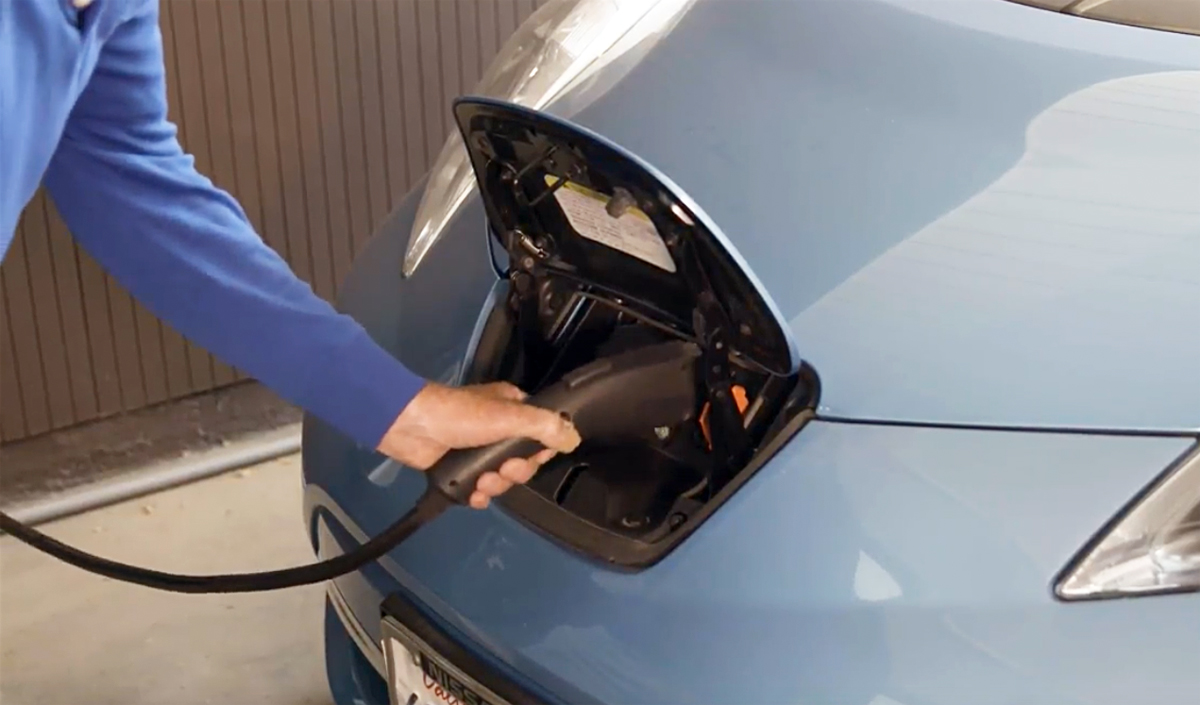Ultimate Eco-Friendly Eichler
 |
|
|
Pairing their love of life with a commitment to protecting the planet in an eco-friendly way brought Eichler homeowners Geoff and Bev Ainscow to the attention of video producer Chris Thomas, who found them to be a true inspiration.
"If we were all like Geoff and Bev, the world would be a better place," says Thomas.
And since Thomas' San Francisco-based video production house, Potluck Productions, is on a mission, as he says, to "spread the message that we need to become good ancestors and preserve the health of the Earth," what better place to start than the Ainscows' Eichler in Sunnyvale's Fairwood, now upgraded as eco-friendly to the max.
The production team's new approximately seven-minute video, 'How to Be a Good Ancestor,' which documents the Ainscows' adventure in home improvement, opens with an aerial view of the couple's Sunnyvale neighborhood, and then zooms in on their 1962 Eichler, where two energy-efficient electric cars sit side-by-side in the driveway.
 |
|
|
"Today, to live within the limits of this one planet, we have given this old house a second life," explains Geoff, who, with wife Bev, incorporated several systems that make their home energy efficient.
Welcoming viewers in, the enthusiastic couple takes us on a tour of the Eichler they've called home since 1968, demonstrating the various ways they have transformed their home and their lives.
Geoff, who has a technical background in manufacturing and engineering working for Hewlett-Packard in Palo Alto, Cupertino, and Sunnyvale over 30 years, explains that he and Bev used a four-prong strategy to reduce their ecological footprint.
"First off is insulation, in order to make the house as sealed as possible," Geoff explains. And while enclosing the atrium and adding triangular windows that open to the sky might seem a controversial approach, he points out that "compared to today's standards, their 1962 Eichler house was very badly built with no insulation in the walls, and constructed using regular 2 by 4s."
 |
|
|
The first issues that were addressed were insulating the walls, installing double-paned glass, and permanently covering the atrium.
"We added triangular windows to let the hot air out at the highest point in the roof," explains Geoff. "It adds 16 percent of the heat needed during the winter, because the angles are very specific on the sun scoops. In summer when the sun is high in the sky, the overlap cuts off the sun's rays coming in to the atrium."
The couple's second strategy is energy use, going from gas to clean-energy buildings.
 |
|
|
"I installed 12 solar panels when I got the first electric car, a Nissan Leaf. The solar provided energy for the house and car—and the electricity went down to zero on our PG&E bill," Geoff says. "I added four extra panels just before I bought the Tesla Model 3."
"A lot of people think it's very expensive to have solar," but Geoff suggests "taking out a home equity loan, like I did. Interest on that loan was less than what I was paying PG&E before I installed it. From the moment I switched them on, it was cheaper than before."




